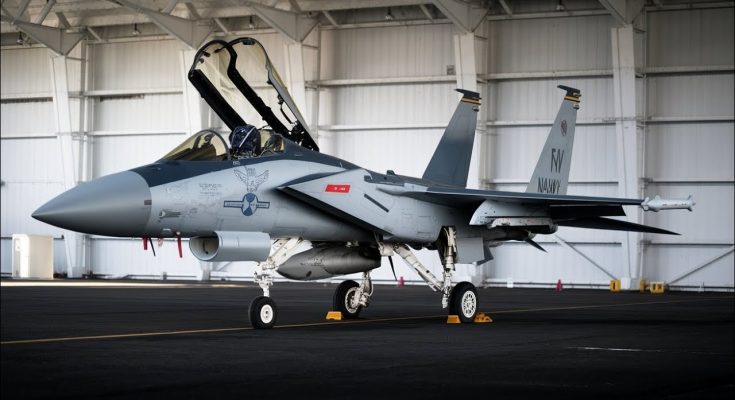F-15EX Eagle II Fighter Performs Unrestricted Climb: A New Era of Air Superiority
The F-15EX Eagle II, the newest iteration of the iconic F-15 fighter jet, has continued to demonstrate its impressive capabilities since entering service. A recent test flight captured the attention of defense enthusiasts and military experts alike as the F-15EX performed an unrestricted climb, showcasing its raw power and advanced engineering. This maneuver, which involves the aircraft climbing at an unrestricted rate, pushed the limits of what the jet can do, signaling a new era of air superiority for the U.S. Air Force and its allies.
A Legacy of the F-15 Eagle
The F-15EX is the latest model of a fighter jet that has been in service for over four decades. The original F-15 Eagle, first introduced in the 1970s, was designed to be a high-performance air superiority fighter, capable of outpacing, outmaneuvering, and outgunning any potential adversary. Over the years, the F-15 evolved with new technology, improved engines, and better avionics, solidifying its place as a formidable force in the skies.
The F-15EX is the culmination of decades of innovation. Unlike its predecessors, the Eagle II is built with cutting-edge features, including advanced avionics, a modern cockpit, and the ability to carry a wide array of weapons. With the ability to integrate seamlessly with current and future defense systems, the F-15EX is positioned to bolster the U.S. Air Force’s fleet well into the 21st century.
Unrestricted Climb: Pushing the Limits
One of the most notable demonstrations of the F-15EX’s capabilities is its recent unrestricted climb. This maneuver involves the fighter jet ascending at full throttle without limits on its rate of climb. The F-15EX, equipped with the powerful F110-GE-129 engines, is capable of producing over 29,000 pounds of thrust per engine, giving it the power to perform such a demanding maneuver.
The unrestricted climb is a test of the aircraft’s ability to maintain a steep ascent without encountering any performance restrictions. During the test, the F-15EX accelerated vertically, demonstrating its exceptional thrust-to-weight ratio and engine performance. As the jet climbed into the sky, its ability to maintain high speeds and reach altitudes quickly highlighted the sheer power of the platform. This maneuver is often performed during air combat training to simulate high-speed evasion tactics or rapid interception of hostile aircraft.
For the F-15EX, the unrestricted climb is not just a demonstration of raw power—it’s a critical capability for future air operations. In a combat scenario, this kind of vertical climb could be used to quickly gain an advantageous position against an adversary or to evade threats from below. The F-15EX’s ability to perform such a maneuver with ease places it in a class of its own, combining speed, agility, and survivability.
Enhanced Avionics and Weaponry
What sets the F-15EX apart from its predecessors is its advanced avionics and weapons systems. The Eagle II incorporates the latest radar, sensors, and software, which allow for enhanced situational awareness, superior targeting, and better communication with allied forces. Additionally, the jet has a higher payload capacity than earlier versions, making it capable of carrying a wider variety of weapons, including advanced air-to-air and air-to-ground munitions.
The Eagle II also integrates with the U.S. military’s evolving technological landscape, allowing it to work seamlessly with fifth-generation fighters like the F-22 Raptor and F-35 Lightning II. This interoperability ensures that the F-15EX can provide critical support to more advanced aircraft in multi-domain combat scenarios.
The Future of Air Superiority
The F-15EX Eagle II’s unrestricted climb is just one example of the aircraft’s impressive performance and its potential to dominate in air-to-air and air-to-ground operations. With its combination of speed, power, and cutting-edge technology, the F-15EX is set to enhance the U.S. Air Force’s ability to maintain air superiority in the coming decades. As the military continues to adapt to emerging threats, the Eagle II will be an essential asset, ensuring that the U.S. maintains its position at the forefront of aerial combat.
The F-15EX represents more than just an upgrade to an existing platform—it is a leap forward in military aviation, reaffirming the legacy of the F-15 while preparing for the challenges of modern warfare. Whether in an unrestricted climb or a complex combat mission, the F-15EX is ready to face the challenges of the skies.



